Generating CSR and installing SSL via IIS (VPS/CLOUD)
How to generate CSR Code:
-
Login via RDP to your Virtual Machine.
-
From the Start screen, click or Search for Internet Information Services (IIS) Manager and open it.

-
Click on the server name.
-
From the center menu, double-click the Server Certificates button in the "IIS" section (it is in the middle of the menu).

- Next, from the "Actions" menu (on the right), click on Create Certificate Request... This will open the Request Certificate wizard.

- In the Distinguished Name Properties window, enter the information as follows:
- Common Name - The name through which the certificate will be accessed (usually the fully-qualified domain name, e.g., www.domain.com or mail.domain.com).
- Organization - The legally registered name of your organization/company
- Organizational unit - The name of your department within the organization (frequently this entry will be listed as "IT," "Web Security," or is simply left blank).
- City/locality - The city in which your organization is located.
- State/province - The state in which your organization is located.
- Country/region - If needed, you can find your two-digit country code in our list.
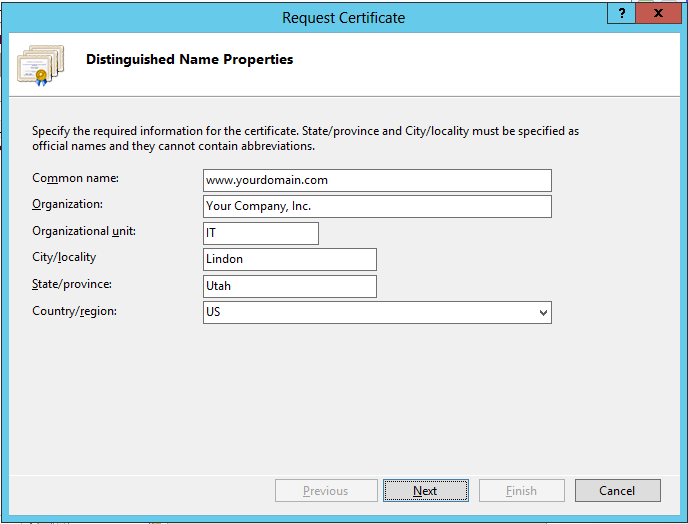
-
Click Next.
-
In the Cryptographic Service Provider Properties window, enter the following information and then, click Next:
- Cryptographic service provider - In the drop-down list, select Microsoft RSA SChannel..., unless you have a specific cryptographic provider.
- Bit length - In the drop-down list, select 2048 (or higher).
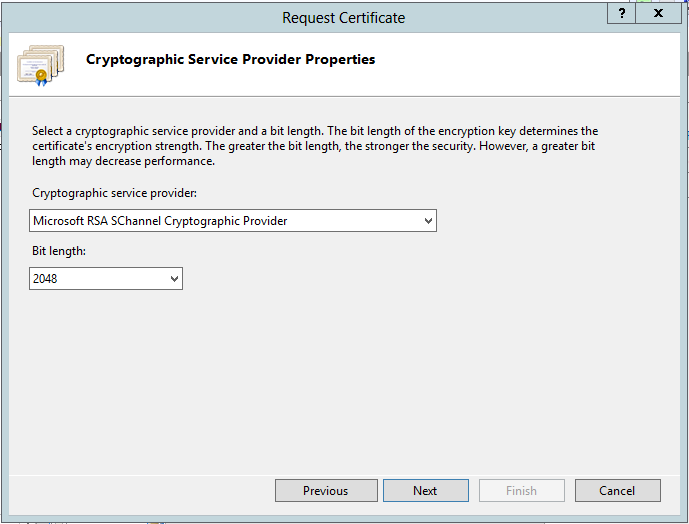
- Click the ... box to browse to a location where you want to save the CSR file. If you just enter a filename without browsing to a location, your CSR will end up in C:\Windows\System32.
Remember the filename that you choose and the location to which you save it. You will need to open this file as a text file and copy the entire body of it (including the Begin and End Certificate Request tags) into the online order process when prompted.
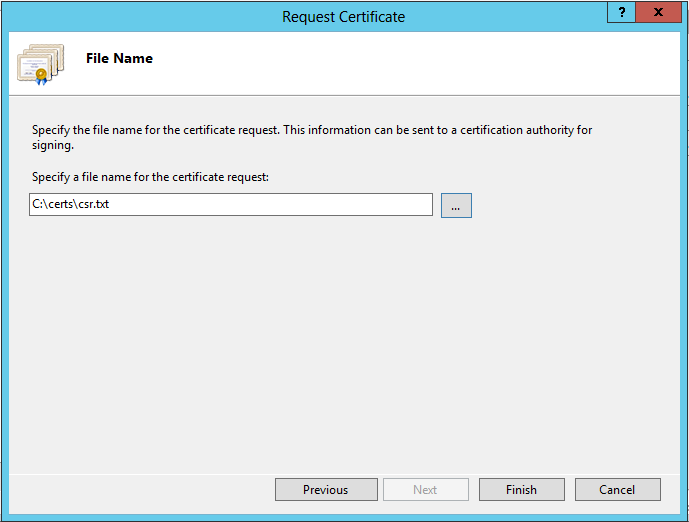
How to install SSL:
-
Open the ZIP file containing your certificate. Save the file named your\_domain\_name.cer to the Desktop of the web server you are securing.
-
From the Start screen, click or search for Internet Information Services (IIS) Manager and open it.
-
Click on the server name.
-
From the center menu, double-click the Server Certificates button in the IIS section (it is in the middle of the menu).
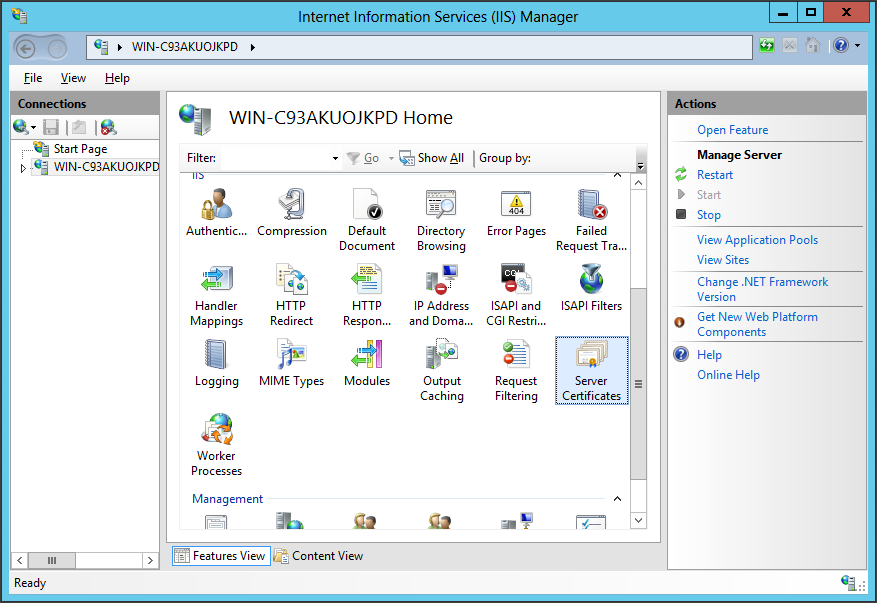
- From the Actions menu (on the right), click on Complete Certificate Request... This will open the Complete Certificate Request wizard.
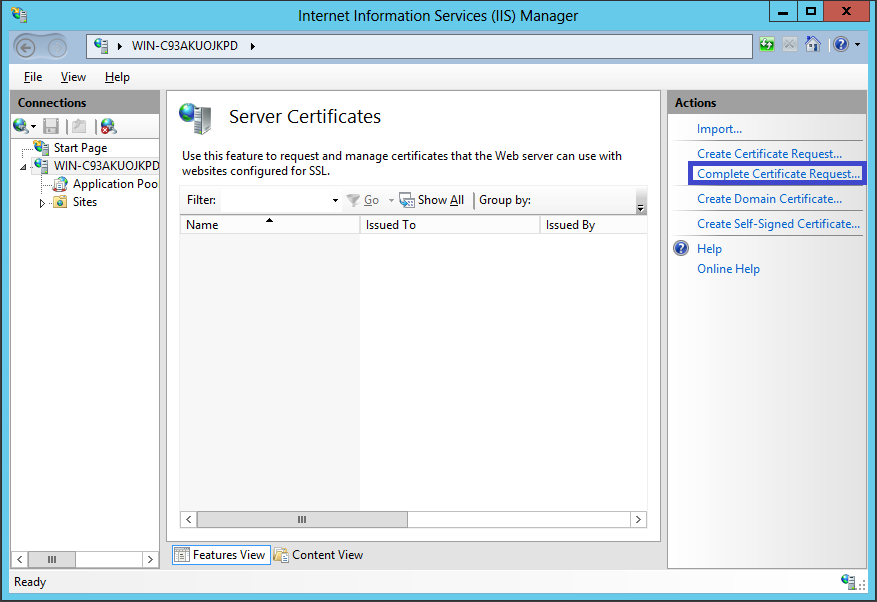
- Browse to your\_domain\_name.cer file. You will then be required to enter a friendly name. The friendly name is not part of the certificate itself, but is used by the server administrator to easily distinguish the certificate. Choose to place the new certificate in the Personal certificate store.

-
Clicking OK will install the certificate to the server.
-
Once the SSL Certificate has been successfully installed to the server, you will need to assign that certificate to the appropriate website using IIS.
-
From the Connections menu in the main Internet Information Services (IIS) Manager window, select the name of the server to which the certificate was installed.
-
Under Sites, select the site to be secured with SSL.
-
From the Actions menu (on the right), click on Bindings... This will open the Site Bindings window.

- In the Site Bindings window, click Add... This will open the Add Site Binding window.
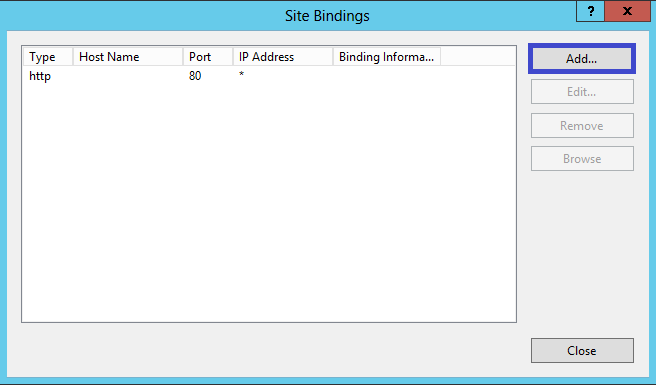
- Under Type choose https. The IP address should be the IP address of the site or All Unassigned, and the port over which traffic will be secured by SSL is usually 443. The SSL Certificate field should specify the certificate that was installed in step 7.
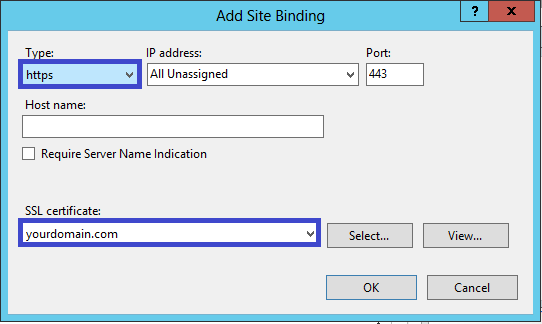
- Click OK.

- Your SSL certificate is now installed, and the website configured to accept secure connections.
Updated 4 months ago